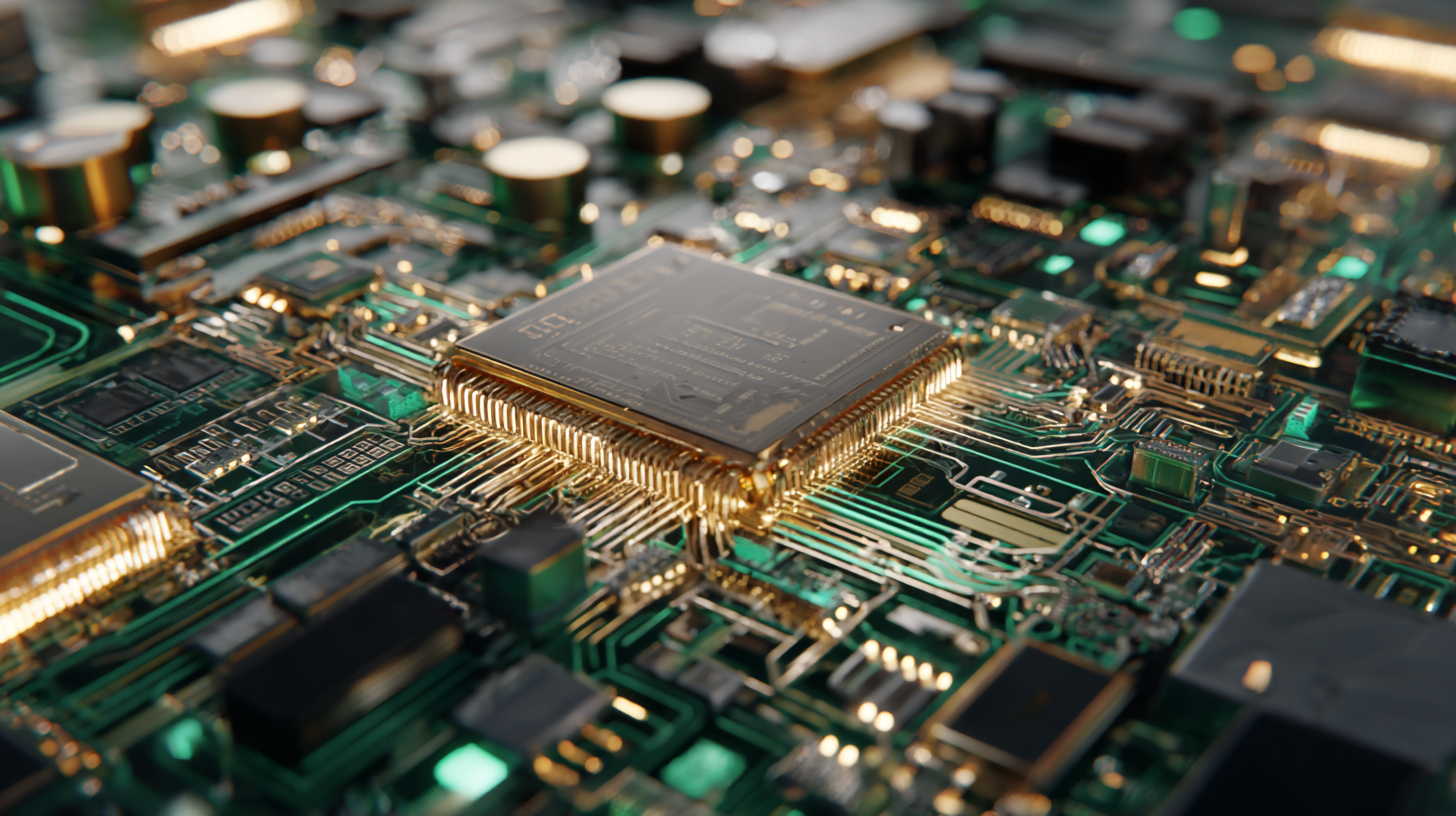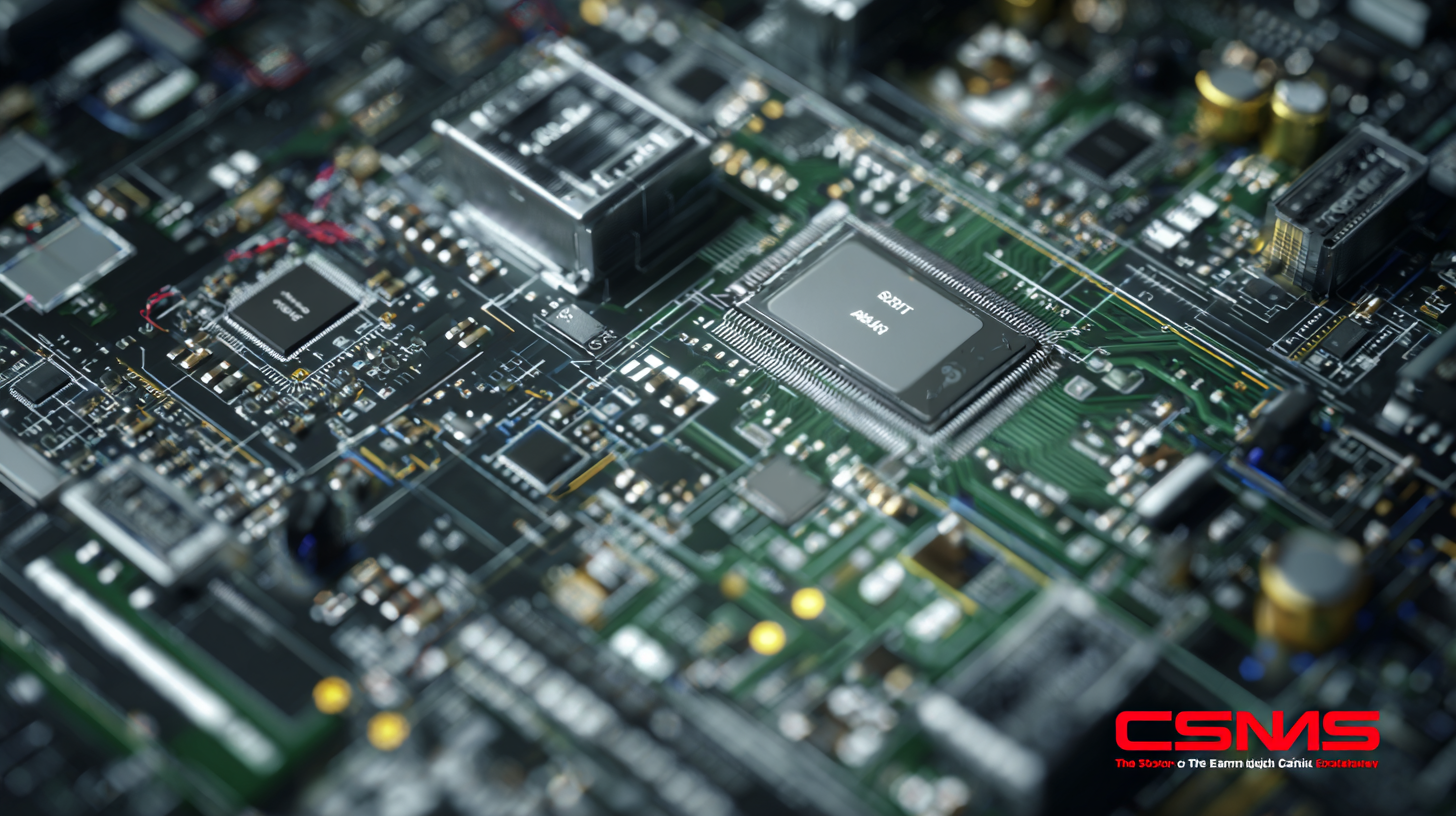The Future of Innovative Electronic Board Assembly Solutions
In an era where technology continually evolves, the demand for high-quality and reliable Electronic Board Assembly solutions has never been greater.
Originating from the top factories in China, these innovative assembly processes not only exemplify cutting-edge manufacturing techniques but also build trust on a global scale.
As businesses worldwide seek to enhance their product quality and efficiency, the significance of advanced Electronic Board Assembly solutions becomes increasingly evident.
This blog explores the transformative role of these solutions in the electronics industry, delving into their impact on production capabilities, sustainability, and global competitiveness.
By harnessing the expertise derived from top-tier manufacturing facilities, companies can navigate the challenges of modern electronics production, ensuring they remain at the forefront of innovation while meeting the rigorous demands of today's market.

Benefits of Advanced Electronic Board Assembly Technologies
As the electronics industry continues to evolve, advanced electronic board assembly technologies are at the forefront of driving efficiency and innovation. The market for electronic assembly services is projected to grow at a compound annual growth rate (CAGR) of 5.8%, reaching over $70 billion by 2027, according to a recent report by Market Research Future. This growth is primarily attributed to the increasing demand for high-performance electronics in sectors such as automotive, telecommunications, and consumer electronics.
One of the key benefits of these advanced technologies is enhanced precision in assembly processes. For instance, automated optical inspection (AOI) systems can detect defects at an impressive accuracy rate of 99.9%, significantly reducing the potential for product recalls and ensuring high-quality output. Moreover, the integration of smart manufacturing practices, like the Internet of Things (IoT), enables real-time monitoring and data analysis, thus optimizing production efficiency and minimizing downtime. With such advancements, companies are not only boosting their productivity but also achieving cost reductions and shorter time-to-market cycles, allowing them to stay competitive in a rapidly changing environment.

Key Players in the Electronic Board Assembly Market
The electronic board assembly market is rapidly evolving, driven by advancements in technology and increasing demand across various sectors. Key players in this market are focusing on developing innovative solutions to enhance efficiency and reduce costs. The growth of the semiconductor foundry market, expected to reach $258.27 billion by 2032, plays a crucial role in supporting these developments, as it provides essential components for electronic assembly processes.
One significant aspect of the electronic board assembly landscape is the growing adoption of low-temperature solder materials, which cater to applications in electronics manufacturing and aerospace. As this segment expands, companies must stay ahead of the curve by investing in research and development to create superior soldering technologies.
Tip: When assessing electronic board assembly solutions, prioritize providers that offer comprehensive services, from design to prototyping. This approach not only streamlines the assembly process but also ensures quality control throughout.
Moreover, the market for small board-to-board connectors is anticipated to rise, driven by innovations in consumer electronics and mobile devices. Partnering with leading manufacturers in this niche can provide businesses with strategic advantages in assembly efficiency.
Tip: Look for connectors that boast high durability and flexibility, as they can significantly impact the overall performance and lifespan of electronic devices.
The Future of Innovative Electronic Board Assembly Solutions - Key Players in the Electronic Board Assembly Market
| Industry Segment |
Technology Used |
Market Share (%) |
Projected Growth Rate (%) |
Key Trends |
| Consumer Electronics |
SMT, Through-Hole |
30 |
7.5 |
Miniaturization, IoT Integration |
| Automotive |
Hybrid, Rigid-Flex |
25 |
8.2 |
EV Technology, ADAS |
| Healthcare |
PCB Assembly, Smart Devices |
20 |
9.0 |
Wearable Devices, Telehealth |
| Industrial |
Automation Circuits, Custom Solutions |
15 |
5.5 |
Smart Manufacturing, AI Implementation |
| Telecommunications |
RF Components, 5G Technology |
10 |
10.0 |
Expanded Connectivity, Cloud Solutions |
Evaluating Different Assembly Methods: Pros and Cons
In the rapidly evolving landscape of electronic board assembly, understanding the various methods available is crucial for manufacturers aiming to stay competitive. Traditional assembly techniques, such as through-hole technology, offer advantages in terms of robustness and ease of repair. However, they may fall short in terms of efficiency. A recent report by IPC finds that surface mount technology (SMT) reduces assembly time by up to 50%, making it more appealing for high-volume production. Yet, SMT can pose challenges in terms of component handling and thermal management.
On the other hand, advanced methods such as automated optical inspection (AOI) and selective soldering present innovative solutions that enhance precision and reduce defects. A study conducted by Research and Markets predicts that the global market for automated assembly solutions will grow by 10% annually, driven by the demand for higher reliability and lower operational costs. However, the initial setup for these systems can be significant.
**Tip:** When integrating new assembly methods, prioritize thorough training for your team to maximize efficiency. Additionally, consider a phased approach to implementation, allowing for adjustments based on performance metrics observed during early adoption. Balancing innovation with existing practices can help streamline operations while ensuring quality.

Innovative Materials and Tools Shaping the Future of Assembly
The assembly of electronic boards is rapidly evolving, driven by innovative materials and advanced tools that are reshaping production processes. Automation technologies are now integral to enhancing efficiency in manufacturing, as evidenced by systematic reviews highlighting their impact across various industrial domains. The push towards smart assembly lines not only streamlines production but also enhances precision, leading to better quality control and reduced waste.
Tips for manufacturers looking to adopt these technologies include investing in training for employees on new digital tools, such as virtual simulations and digital twins. By preparing the workforce for the integration of these advanced systems, companies can ensure smoother transitions and improved outputs. Furthermore, staying updated on global trends in supply chains, especially in sectors heavily influenced by automation, is crucial for strategic planning and competitiveness.
Innovative materials play a pivotal role as well. For instance, advancements in lightweight and high-strength composites are enabling more efficient designs that facilitate easier assembly. Companies should explore partnerships with material scientists to harness these innovations, which can lead to significant enhancements in product design and assembly methodologies. As the landscape of electronic board assembly continues to evolve, adaptability and foresight will be key to capitalizing on these transformative opportunities.
The Future of Innovative Electronic Board Assembly Solutions
This chart illustrates the projected growth in the adoption of innovative materials and tools in electronic board assembly solutions from 2023 to 2028. As technology evolves, the demand for more efficient and sustainable assembly methods is expected to rise significantly.
Trends Driving Competitive Advantages in Board Assembly Solutions
As technological advancements continue to reshape the electronics industry, board assembly solutions are evolving to meet the demands of modern production. One of the key trends driving competitive advantages in this field is the integration of automation and robotics. By employing advanced machinery, manufacturers can significantly reduce assembly times and increase precision. This automation not only enhances productivity but also minimizes human error, allowing for more reliable and consistent product quality.
Another vital trend is the emphasis on sustainability and eco-friendly practices. As consumers become increasingly environmentally conscious, companies are adopting greener materials and processes in their board assembly operations. Emphasizing energy efficiency and waste reduction not only appeals to a broader audience but also helps organizations comply with stringent regulatory requirements. This commitment to sustainability can create a strong competitive edge, attracting clients who prioritize environmental responsibility in their supply chain choices.
Furthermore, the rise of smart technologies, such as the Internet of Things (IoT) and artificial intelligence (AI), is transforming board assembly solutions. These technologies enable real-time monitoring and data analytics, providing insights that lead to continual improvements in manufacturing processes. The ability to harness data for predictive maintenance and process optimization allows companies to stay ahead of market demands and respond swiftly to changes, securing their position as leaders in the competitive landscape.